Find out why Parmigiano aged cheese is ranked among the best in the world. Check how to organize a Parmigiano factory tour on day trips from Milan & Florence. Find out the best places to go in Italy for a private food tour.
Northern Italy, renowned for its rich culinary traditions, is home of the finest cheese in the world. Parma is one of the three Italian cities (together with Alba and Bergamo) that received the UNESCO honor title of “City of Gastronomy”. It is one of the best places to visit in Italy for travelers with a culinary passion. Being a neighbor of Modena, two towns together create a perfect day trip from famous nearby cities, including Milan & Florence.

Table of Contents
The Craft of Parmigiano Aged Cheese Production
The most special gastronomy heritage of the city is undoubtedly Parma’s ham (prosciutto) & Parmigiano cheese. In another blog article we have provided a full explanation about the production process of highly artisan Parma Prosciutto, so now let’s discover together the legendary Parmigiano cheese.
Parmigiano Reggiano, known to you also as Parmesan, is recognized as the king of Italian cheeses. It is the most recognizable, imitated, and sold cheese worldwide.
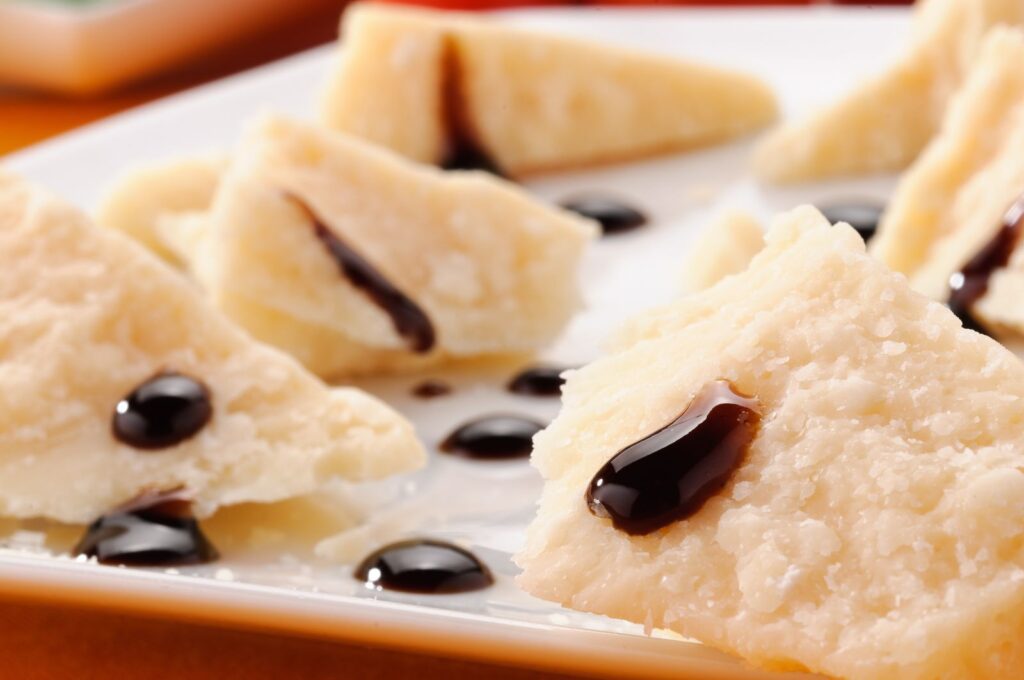
The history of Parmigiano cheese dates back to the early Middle Ages (XI century), when Benedectine & Cistercense monks started to produce this delicious cheese (originally called ‘’Caseus Parmensis’’) that could be conserved for long periods of time, in the four monasteries:
- monastery Cistercense di Fontevivo (Fontevivo)
- monastery Benedettino di san Prospero (Reggio Emilia)
- monastery Cistercense di san Martino (Valserena)

During the Renaissance, when Parmigiano became popular even in neighboring kingdoms such as Milan and Rome, the weight of cheese wheels already reached 18 kg. The name itself – Parmigiano – is a combination of the names of two main towns, around which the cheese is produced, Parma and Reggio. Both are very close to Florence, that is why cheese factory tour near Parma is one of the best day trips from Florence for food lovers.
In 1612 Parmigiano cheese received the right of having ‘’denominazione di origine controllata’’ (DOC -”Controlled Designation of Origin”, similar system as applied in Italian wine labels), requested by the duke Ranuccio I Farnese of Parma.
It was not until 1934 that the Parmigiano Reggiano label was introduced and stamped on each cheese wheel, which was used by merchants to distinguish between the original Parmigiano cheese and its imitated products.

Being the world’s most famous aged hard cheese, what makes Parmigiano stand out is its capacity to develop complex texture and layer of flavors by time. Each cheese wheel will develop its own unique flavor depending on the aging time.
While 12-month Parmigiano cheese has a fresh flavor like pears and apples, making it suitable for white wines and appetizers, 36-month or even 60-month Parmigiano cheese has a rich flavor like nuts or spices, making perfect pairing with important red wines and desserts.
Indeed, the price of Parmigiano cheese varies largely on the aging time, ranging from 20€ for 1 kg of 12-month Parmigiano to 50-70€ for 1 kg of 60-month Parmigiano.

Cheese wheels are the gold standard for producers
Did you know that the cheese wheels are used as collateral for bank loans? For over 70 years, the Consorzio del Formaggio Parmigiano Reggiano has monitored the quality and recipe of Parmigiano Reggiano. They have strict regulations and standards that cannot be violated. For example, cattle feed must be grown in the cheese production area. Silage feed, fermented products, and animal-derived flour are prohibited.
To understand better the production process of Parmigiano cheese, there is no better way than joining an in-person visit to the production site where the cheese master will explain to you in detail every single step of Parmigiano production.
You can see how the product is made in the present moment. These emotions are unforgettable. For a long time afterward, you will remember the passionate eyes of the cheesemakers, winemakers, and farm owners as they talk about their craft.
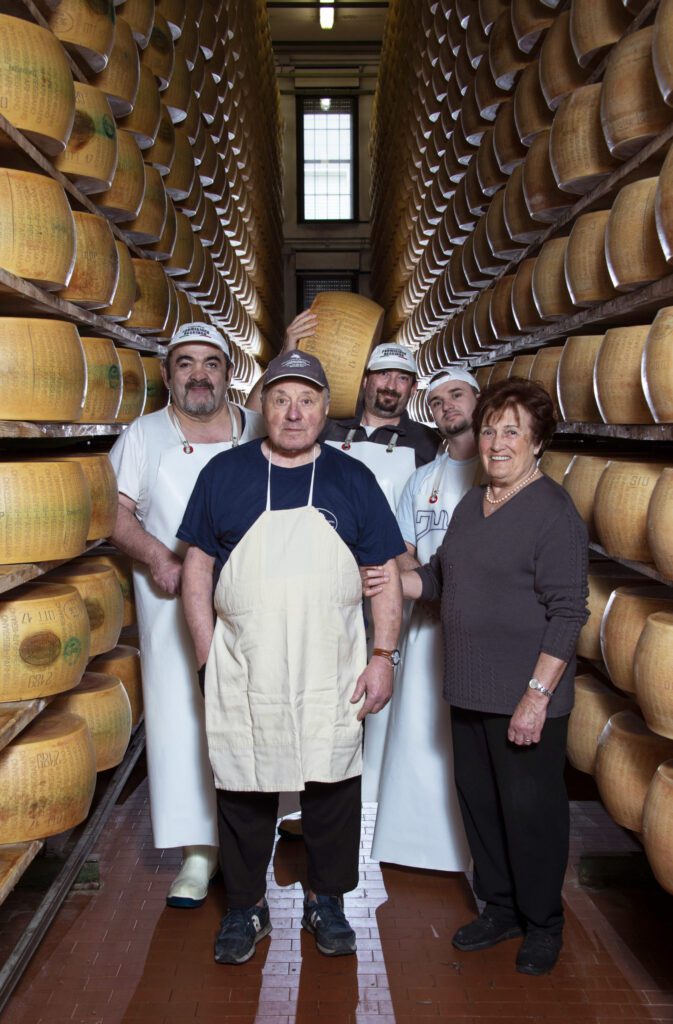
Unforgettable factory visit at the Parmigiano farm
The scale of this cheese’s popularity is astonishing when you see the small production area on the map. Firstly, Parmigiano cheese can only be produced from the milk of cows raised within the boundaries of Parma, Moderna, Reggio, Mantova and a small area of Bologna province, on the left side of the Reno river. This regulation ensures that the cows will only eat grass grown within this specified area, and farms are not allowed to feed them with masses, fermented foods or commercial animal feed.
Parmigiano cheese in numbers:
- 330 dairies
- 2820 cow farms
- 265,000 cows over 24 months old
- 50,000 people work for the King of Cheeses
- More than 3.5 million cheese wheels of Parmigiano Reggiano are produced annually
- It takes 13.5 liters of fresh milk to make 1 kg of cheese, and 550 liters for one wheel
- Each cheese wheel weighs an average of 39.9 kg
Fresh milk from the cow farms is delivered directly to the cheese factories every morning between 5-6 AM and it takes about 550 litres of cow’s milk to produce each wheel of Parmigiano cheese. The most important cow type is without doubt ‘’Razza Rossa Parmense’’ (Red Breed Cow of Parma).

Afterwards, the cow’s milk is continuously heated at a constant temperature of 55 degrees, then rennet from the cow’s stomach is added to the heated milk to form the curd and the cheesemaker will use a metal tool called ‘’lo spino’’ to break the curd into tiny granules. After solidifying, these tiny granules will accumulate at the bottom of the container, forming blocks of fresh Parmigiano.
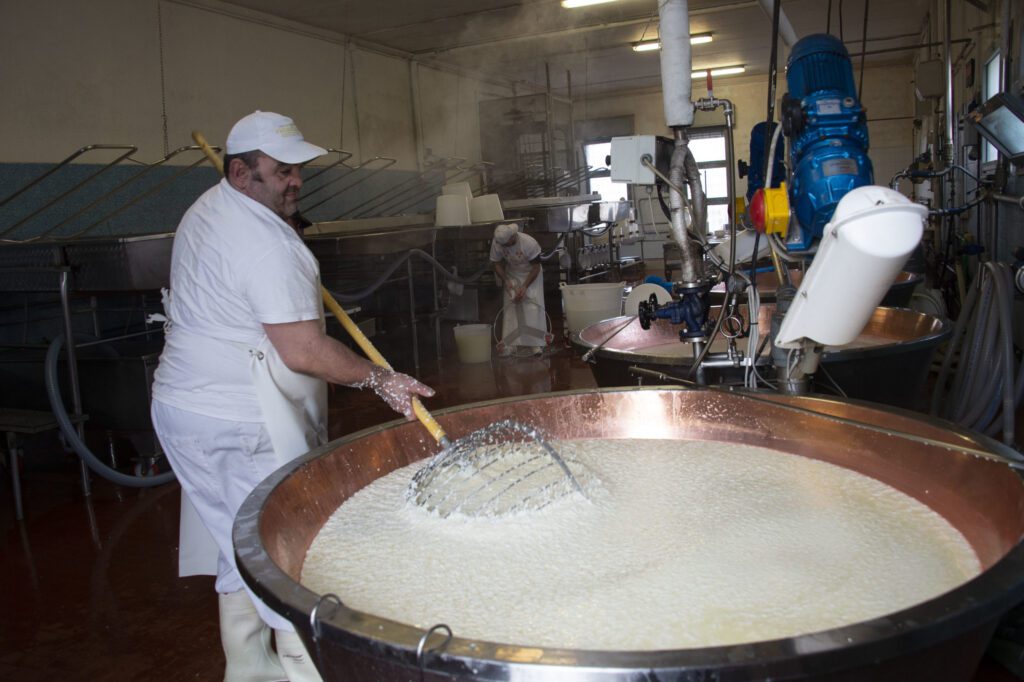
At around noon time of the same day when the milk was collected in the early morning, each block of Parmigiano will be squeezed and pressed into a container with imprinted sheet marking the day, month, year, factory ID and a unique code. These information serves as identity card of each cheese wheel which help consumers locate where, when, and by whom the cheese was made.
The most surprising production step is undoubtedly Parmigiano salt bating process. After a few days in the container, the cheese will be soaked in a tank of 100% pure salt water, the salty water will gradually enter the cheese, acting as a completely natural preservative, helping Parmigiano cheese to retain its quality and safety for even more than ten years.

The final stage to create perfect cheese is the aging process. The cheese blocks will be transferred to an aging room with low temperature and humidity, creating the best conditions for the microorganisms to develop in each wheel of cheese.
The aging process of Parmigiano Reggiano cheese
After 12 months of aging, the Parmigiano cheese association will come to check the quality of each wheel of cheese with a specialized hammer. Based on the sound of each wheel of cheese, experts will decide whether the cheese wheel meets regional standards before being put on the market.
From this moment, the cheese bears the name Parmigiano Reggiano. Wheels with minor defects are sold as Parmigiano Reggiano Mezzano. Others cannot even be called Parmigiano Reggiano.
Once approved, the producers can decide to release the 12-month cheeses to the market, or to keep them in the aging house for up to 24, 36, 60 months or longer.
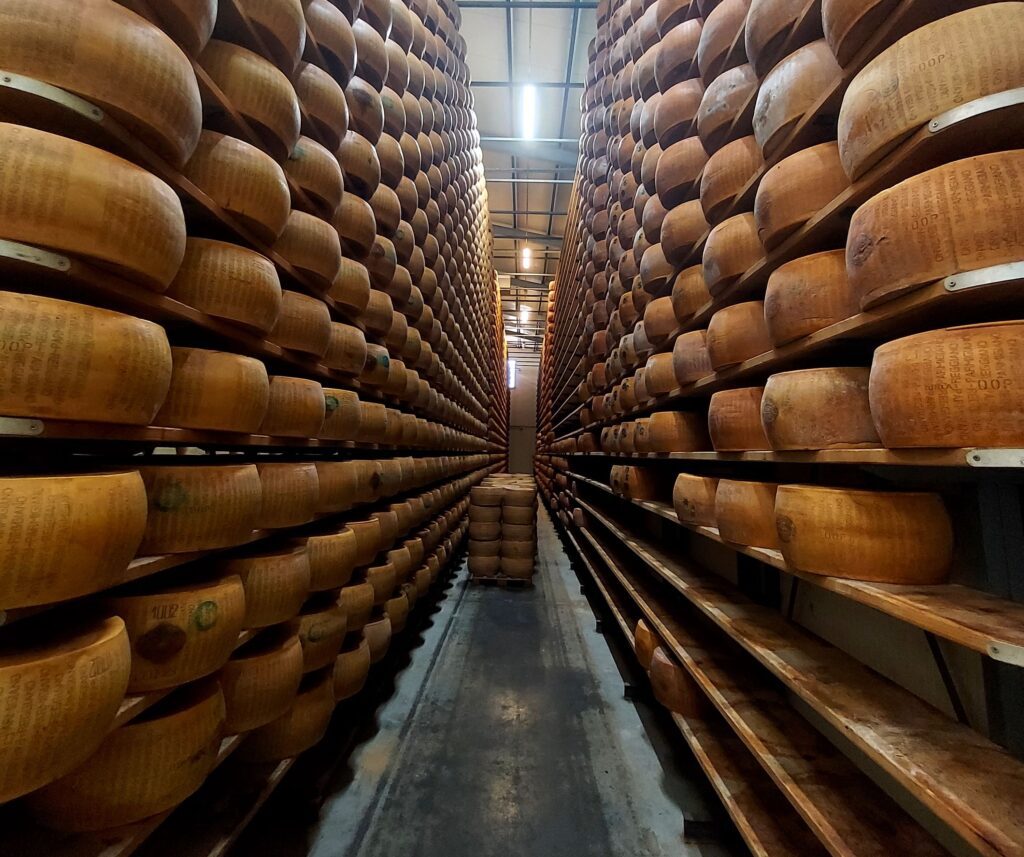
While joining the in-site Parmigiano factory tour, all the above information will be explained to visitors in more details and at the end of the tour you will taste different aged Parmigiano cheese, to experience all the complex taste variations of this renowned aged cheese and understand why it is the proud heritage of the city Parma.
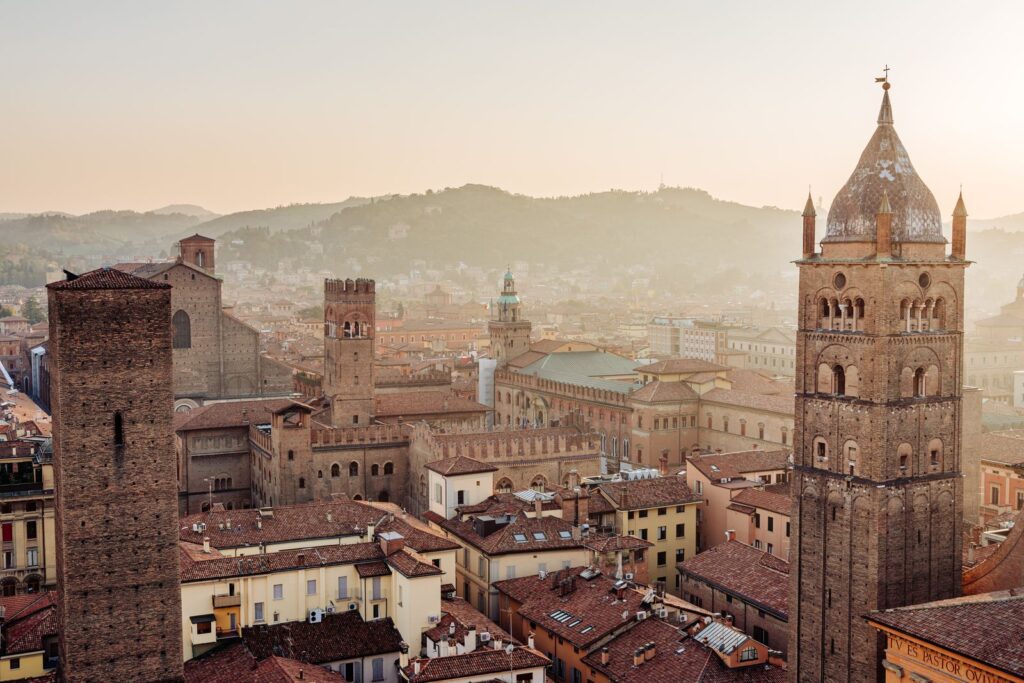
Feel free to contact us to book Parmigiano cheese factory tour in Parma & Modena area. It is one of the best day trips from Milan or Florence (or other nearby destinations) and can also include a visit of parmigiano cheese farm visit, balsamic vinegar factory visit or prosciutto ham factory tour in Italy.
This entertaining and informative day trip can be combined with Lamborghini & Ferrari factory tour & museum visit, as well as beautiful local towns, fascinating medieval villages and a pleasant stop in one of the best outlets Fidenza Outlet Village and much more. It may also be a convenient stop during a private transfer between Milan, Florence and Rome.
With our expert understanding of the region and multiple field trips a memorable experience is guaranteed.
